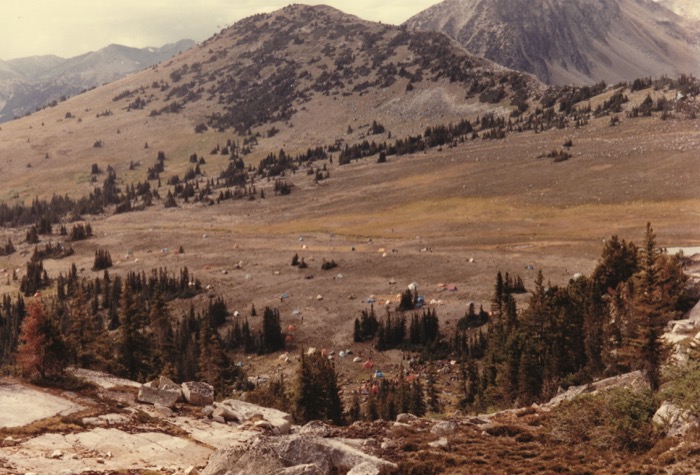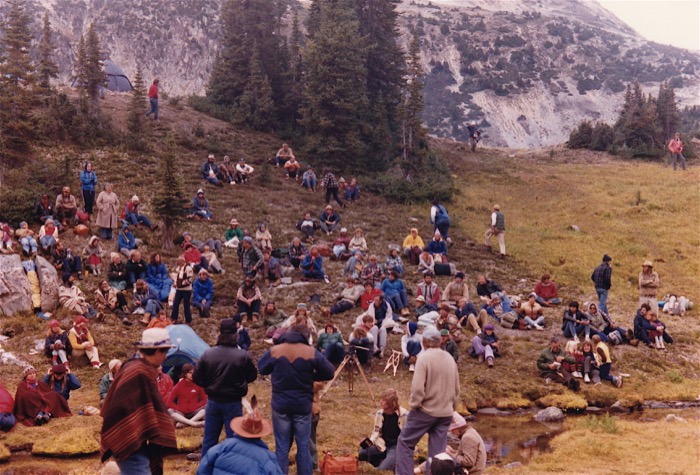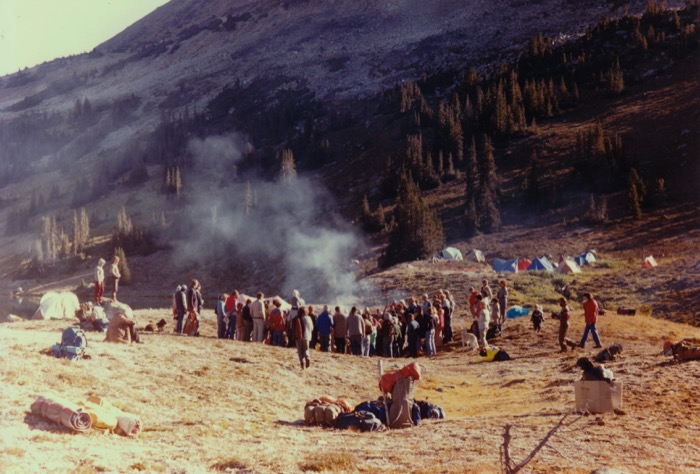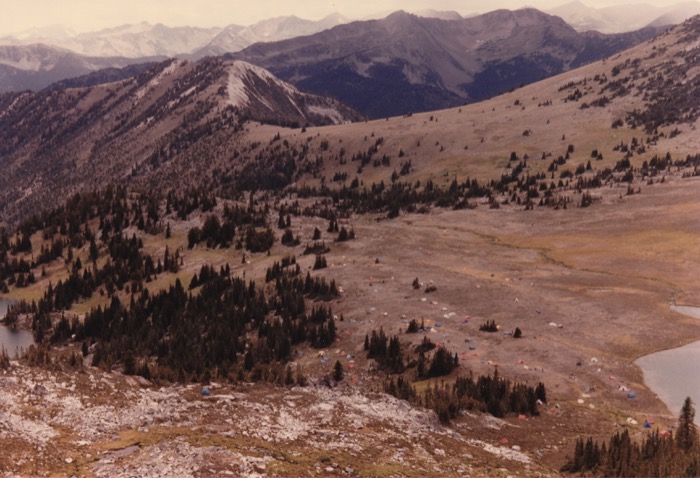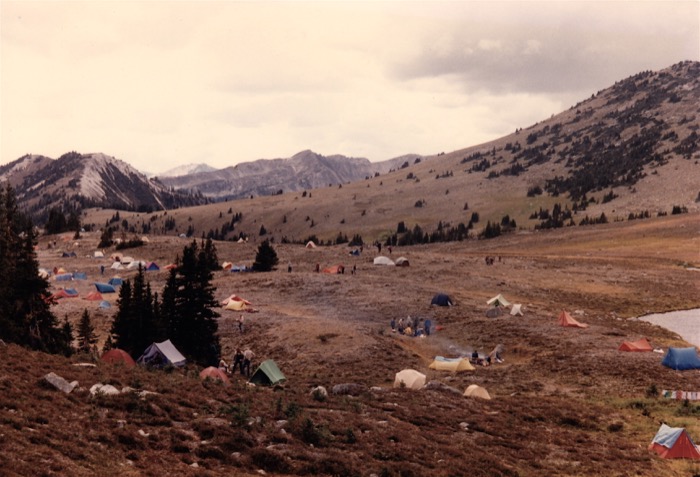Voices for the Wilderness (1986)
A sound document commemorating the first Stein Valley Alpine Cultural Festival (1985)
Composed by
Hildegard Westerkamp
Photographs by
Norbert Ruebsaat
Length: 35:19
Voices for the Wilderness is a sound slide presentation of the Voices for the Wilderness Cultural Festival held Labour Day Weekend, 1985, in the high country of the Stein Watershed.
400–plus people hiked up to timberline to camp together for three days of feasting, singing, story–telling, speech–making, circle and pipe ceremonies and political strategy sessions to draw attention to the logging threat on this, the last remaining wilderness watershed in the region.
The weekend was a very special experience for all who participated because it released combinations of spiritual and political, personal and communal, civilized and wild energies that are normally all but inaccessible to urban dwellers and that were unique to this location.
Voices for the Wilderness documents some of this dynamic, and is intended as a record of the event for those who participated, and as an introduction to the issue and its emotions for those who didn't. The piece brings together songs, chanting, speeches, drumming, fireside conversations, music and environmental sound to give an acoustic portrait of the weekend. It mixes these with spoken testimony from the B.C. Wilderness Advisory Committee Hearings held in Lytton in February, 1986, to further clarify the issue of Indigenous land claims and environmental rights.
Thanks to the Lillooet Tribal Council for organizing and hosting this unique event, and to all participants of the Wilderness Festival for helping make this document possible. Special thanks go to Joe David, The Yalakom Drummers, Napoleon Kruger, Hilda Austin, Dan Rubin, and all others who brought their songs and music to the festival, as well as to Chief Perry, Grant Copeland, Tom Crawley, Adrian Dorse, Ruby Dunstan, John McCandless, Michael McGonigle, Jessoa Lightfoot, Will Paulik, and all others who spoke and shared their thoughts. Together they managed to save the valley from destruction, as can be read here 35 years later:
The Nlaka’pamux have always been very protective of this valley, which remained relatively unknown to outsiders well into the 20th century. When roads and industrial logging were proposed for the Stein Valley in the 1970s, Lytton First Nation led a 25 year battle against development, together with neighbouring Nlaka’pamux and other Indigenous communities and joined by environmental groups. This culminated in the 1995 creation of the 107,191 ha Stein Valley Nlaka’pamux Heritage Park, co-managed by the Lytton First Nation and BC Parks. Today the Stein Valley is shared with all those who respect its cultural and natural values, and recreational access is restricted to low-impact self-propelled activities. Most importantly, the Stein Valley continues to be used by the Nlaka’pamux in traditional and spiritual ways. From: https://en.wikipedia.org/wiki/Stein_Valley_Nlaka%27pamux_Heritage_Park
-
process_data();
$images = $totalgallery->images;
break;
case "blog":
$totalgallery = new \TotalCMS\Component\Blog("voices-gallery2");
$posts = $totalgallery->filter_posts($filter);
$images = $posts[0]->gallery;
break;
case "blog-random":
$totalgallery = new \TotalCMS\Component\Blog("voices-gallery2");
$posts = $totalgallery->filter_posts($filter);
shuffle($posts);
$images = $posts[0]->gallery;
break;
default:
$totalgallery = new \TotalCMS\Component\Gallery("voices-gallery2");
$totalgallery->process_data();
$images = $totalgallery->images;
}
$baseURL = "../../../";
$sort = "default";
if ($sort == "reverse") $images = array_reverse($images);
if ($sort == "shuffle") shuffle($images);
$feature = ("" === "clearing-feature");
$feature_count = 5;
if ($feature) {
usort($images,function($a,$b){
if (!is_object($a)) $a = (object) $a;
if (!is_object($b)) $b = (object) $b;
return strcmp($b->featured,$a->featured);
});
}
foreach(array_slice($images, 0, 20) as $image) {
$displayThumb = "sq";
// This is not great. The CMS needs to be reworked to always use objects
if (is_object($image)) {
$alt = $image->alt;
$img = $image->img;
$thumb = $displayThumb === "full" ? $img : $image->thumb->sq;
}
else {
$alt = $image["alt"];
$img = $image["img"];
$thumb = $displayThumb === "full" ? $img : $image["thumb"]["sq"];
}
$featured = "";
if ($feature && $feature_count != 0) {
$featured = "class=\"clearing-featured-img featured\"";
$feature_count--;
}
$format_alt = $totalgallery->format_text(htmlspecialchars($alt));
$caption = $alt == "" ? "" : "data-caption=\"$format_alt\"";
echo "
$alt
";
}
?>
